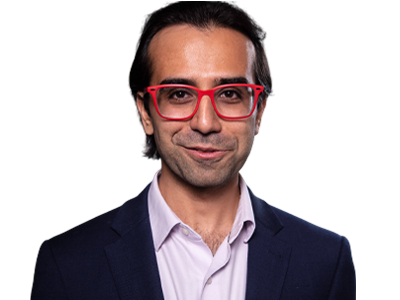Hosted By

Chief Executive Officer Cheeky Scientist

Join us as we talk about…
In this week’s episode…
- You’ll learn the difference between a resume headline and resume professional summary
- Next, you’ll learn tips on writing a resume headline
- Finally, you’ll learn why having a proper resume headline will help capture the attention of recruiters
I had someone write in recently asking me what’s the difference between a resume headline and a resumes’ professional summary.
A resume headline, also known as a resume title, is a brief statement – typically 3-8 words that appears at the top of your resume and serves as a concise introduction to your qualifications and career goals.
This is different from your professional summary which is more robust and should include 3 bullet points of your biggest career highlights that are relevant to the job you’re applying to.
It’s increasingly popular today and can serve as an essential element of your resume because it’s the first thing recruiters and hiring managers see, and it can help grab their attention and make a strong first impression. Even more importantly, if done right, these headlines can help you get through AI resume screeners which are increasingly stringent and want to see a clear match in the very top most portion of your resume right away.
So, what should your headline include? Your resume headline should convey your unique value proposition to potential employers. It should highlight your key skills, experiences, and career goals. Your resume headline should be brief, typically consisting of a single sentence or phrase. Aim for around 3-8 words to ensure it’s concise and impactful.
Incorporate keywords into your headline too and make sure they’re related to your industry, job role, and skills. Use terms that are relevant to the job you’re applying for, as this can improve your resume’s chances of passing through applicant tracking systems (ATS).
Make sure you focus on your most significant strengths and qualifications. Mention your most relevant accomplishments and skills that align with the job you’re seeking. You want this headline to be a bigger font too – consider anything between 16-24. You should add a personal touch to your headline by mentioning your career goals, values, or a unique trait that sets you apart.
But try to avoid jargon – steer clear of industry-specific jargon or acronyms that may not be universally understood. Instead, use plain language that can be easily comprehended by a broad audience. In summary, your resume headline is a critical component of your resume that can make a significant difference in how your application is received by employers.
By crafting a concise, tailored, and impactful headline, you can capture the attention of recruiters and make a strong case for why you’re the ideal candidate for the job. Remember to customize it for each job application, and don’t forget to proofread and revise to ensure it’s error-free and effective.










